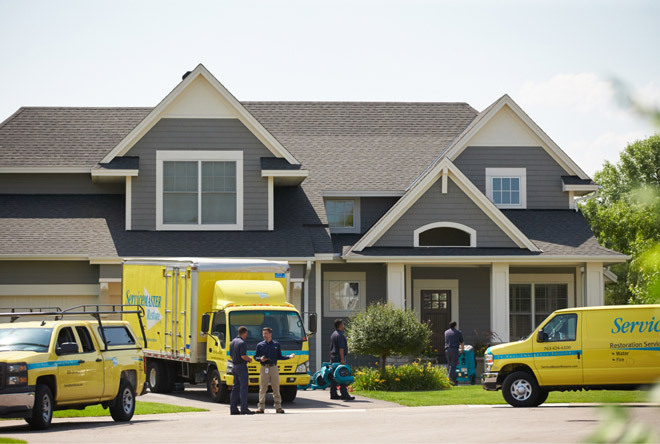WINTER WATER DAMAGE MITIGATION SERVICES IN LYNCHBURG, VA
Water damage is one of the most common causes of insurance claims for homeowners, and cold-weather related water damage is no exception. With a vast array of causes from dripping pipes to all-out flooding, the damage from water can range from a minor nuisance to complete destruction. When water isn't properly and immediately mitigated it has the potential to cause additional problems such as electrical hazards and microbial growth. When you find yourself faced with water damage, no matter the size, you can count on the experts at ServiceMaster Restore of Lynchburg. Professional advice and years of experience are only a phone call away.
WHAT IS WINTER WATER MITIGATION?
Water mitigation is the process of reducing or preventing the amount of damage to a property after water-related damage. Water works quickly and efficiently to cause destruction in your home. We're ready to act even faster to help you prevent additional damages and costs. In wintertime, the mitigation process remains the same, but we also work with your local plumber to help ensure that your pipes are less likely to freeze again in the future.
CAUSES OF WINTER WATER DAMAGE
Water damage can be caused anytime water enters your home where it shouldn't be. Some of the most common causes of water damages are:
- Frozen and Burst Pipes
- Ice Dams
- Frozen Outdoor Spigots
No matter the cause, immediate mitigation is the key to reducing the damage to your home, and at ServiceMaster® we're always ready to take on that task. Our rapid response team is available 24 hours a day, 7 days a week, 365 days a year to immediately respond to your emergency water damage ensuring the most thorough and efficient restoration possible.
Call (434) 254-1570 any time day or night, for comprehensive water damage removal and repair in the Lynchburg, VA area.

WHAT TO DO WHEN YOU EXPERIENCE A WATER LOSS
- Call for professional help immediately. Water damage and microbial growth can begin within hours of the damage.
- Take pictures before beginning any water removal, so the initial extent of the damage is documented.
- Ensure the area is safe to enter.
- Remove as much water as you can on your own, including any wet materials that aren't permanently attached.
- Lift draperies and furniture off of the floor as much as possible.
- Remove other contents such as photographs, painting, and art to a safe, dry location.
WHAT NOT TO DO IN A WATER DAMAGE SITUATION
- Don't ever enter a room with standing water until you've turned the electricity off.
- Do not use a regular household vacuum to remove water as it's an electrical hazard.
- Never use electronics or electrical appliances that are sitting on wet carpet or flooring.
- Do not remove tacked-down carpet without professional help.
- If you find visible mold, leave it alone. Disturbing it can disperse the spores making the problem worse.


